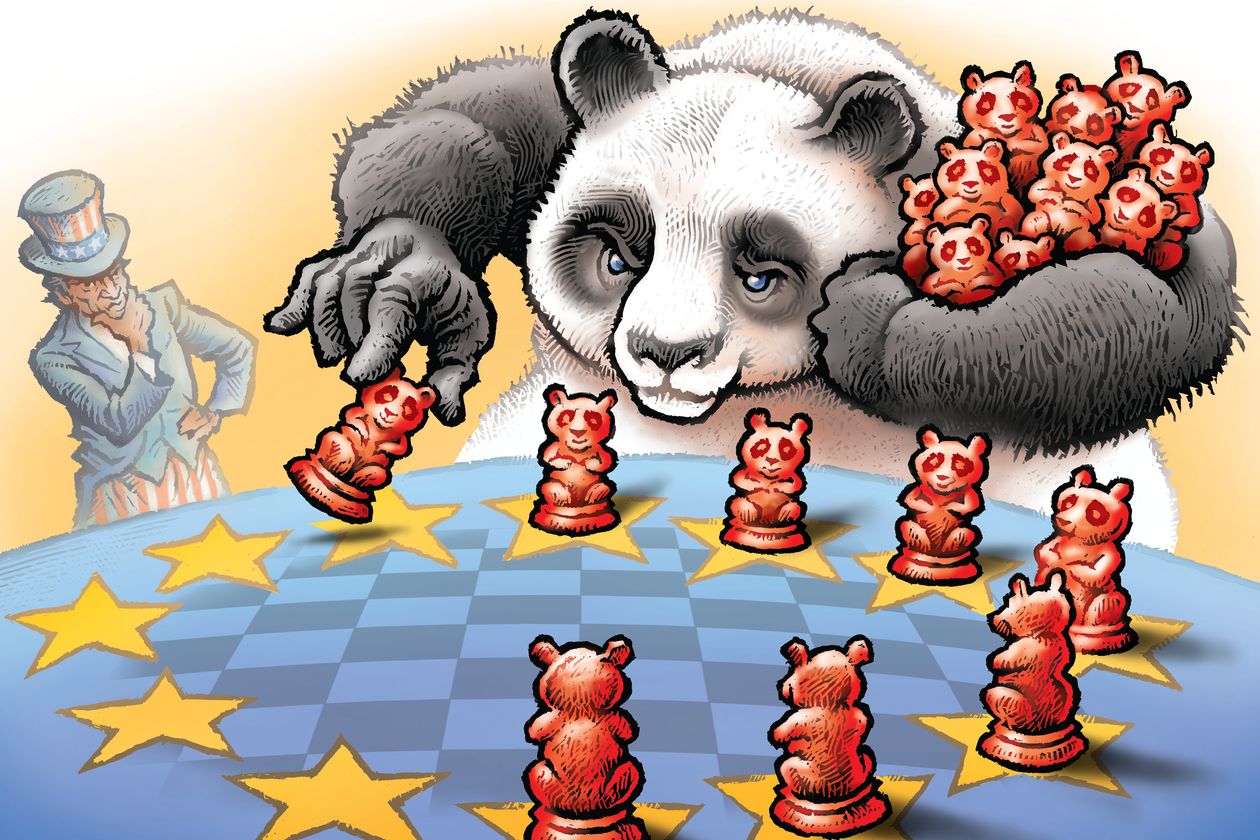By Andrew A. Michta, Wall Street Journal–
One ploy for countries competing with other great powers is to peel away the allies of your adversary and convert them to your interests. In 1972, Richard Nixon took a trip to Beijing, one of the most daring and effective gambits in the history of U.S. foreign policy. At the time Beijing was a regional player and a nuclear power, but nowhere near a peer competitor to the U.S. or the Soviet Union. Nixon turned China into a lever of American influence.
We are about to find out how well Beijing can play the strategic game. On Monday the European Union and China are scheduled to hold a virtual summit—originally planned as a meeting in Leipzig, Germany—aimed at hammering out the EU-China Comprehensive Agreement on Investment. This pact would lay out parameters of trade, address questions of Chinese subsidies and protection of European intellectual property rights, and, if German Chancellor Angela Merkel gets her way, define China’s role in fighting climate change.
So far during negotiations, Beijing has resisted meeting the EU halfway, especially on subsidies. But there are indications that the Chinese may become more accommodating. The summit comes only weeks before the U.S. presidential election, and the meeting will be Xi Jinping’s best opportunity to drive a wedge between the U.S. and Europe on trade. For Europe’s business community, access to the Asian market is seen as essential to the EU’s economic recovery. Having the treaty with Beijing would—at least in theory—help protect European intellectual property and keep vulnerable European firms from being bought outright by the Chinese.
Europe has been central to Beijing’s global strategy for years. Some 75% of European imports come by sea, with access through the North Atlantic being crucial, and China has aggressively pursued acquisitions of stakes in major European ports. Most important, through its Belt and Road Initiative and its investments, China has aimed at establishing an alternative supply chain over land across Europe and Asia.
Beijing’s endgame is what I call the “global inversion” of established trade flows, which currently favor maritime routes, a setup that relies on U.S. naval power as enforcement. If China can develop a cross-Eurasian supply chain and protect it, it won’t need to match America in the maritime domain. That would be a fundamental shift in global trade and power distribution. China can do this because so far Washington—which now sees China as both an economic and military challenge of the first order—has not been able to convince the Europeans to see Beijing as anything more dangerous than an economic problem set. European leaders are increasingly concerned about Chinese bullying, but they don’t want to be pulled into an alliance with the U.S. against Beijing.
If these conditions hold and China can drive a wedge between the U.S. and Europe, normal trans-Atlantic relations will be a thing of the past. Such a change would transform Europe from the trans-Atlantic gateway to Eurasia into the tail-end of a Chinese-controlled Eurasian supply chain, allowing Beijing eventually to dominate Europe and bid for global hegemony.
China’s Europe strategy has a military component. The People’s Liberation Army Navy has been actively pursuing access to ports in Europe, especially in the Mediterranean and the Black Sea. It has conducted joint drills with the Russian Navy and the EU, starting in 2018 when it completed its first naval exercise with the EU Naval Force in the Gulf of Aden.
China has stakes in port facilities in the Mediterranean, including Greece, Spain, Egypt, Italy and Morocco, while the Chinese navy operates a support base in Djibouti, positioning itself to project power deeper into Africa. China’s navy has also entered the Baltic and is investing in capabilities in the Arctic, with a tender for a 33,000-ton nuclear-powered icebreaker and plans to operate four nuclear-powered aircraft carriers by 2035.
China sees Europe as a region whose wealth and technology can be exploited for advantage over the U.S. Europe is an attractive target: The Continent is desperate for market access and cash as the economy tries to recover from a pandemic. With Russia as a threat to Central and Eastern European countries on the North Atlantic Treaty Organization’s flank, Beijing also has an opportunity to exploit fissures within Europe. The rise of anti-Americanism in some countries will make it difficult to achieve a consensus on threats, while the alignment between Beijing and Moscow may deepen cleavages in Europe when it comes to relations with the U.S.
The frayed state of U.S.-European relations, especially the increasingly contentious relations between Washington and Berlin, offers Mr. Xi an opportunity to “play Nixon” in his own way. Washington needs to pay attention to the EU-China summit this week—and its aftermath.
Mr. Michta is dean of the College of International and Security Studies at the George C. Marshall European Center for Security Studies in Garmisch-Partenkirchen, Germany.


Leave A Comment
You must be logged in to post a comment.